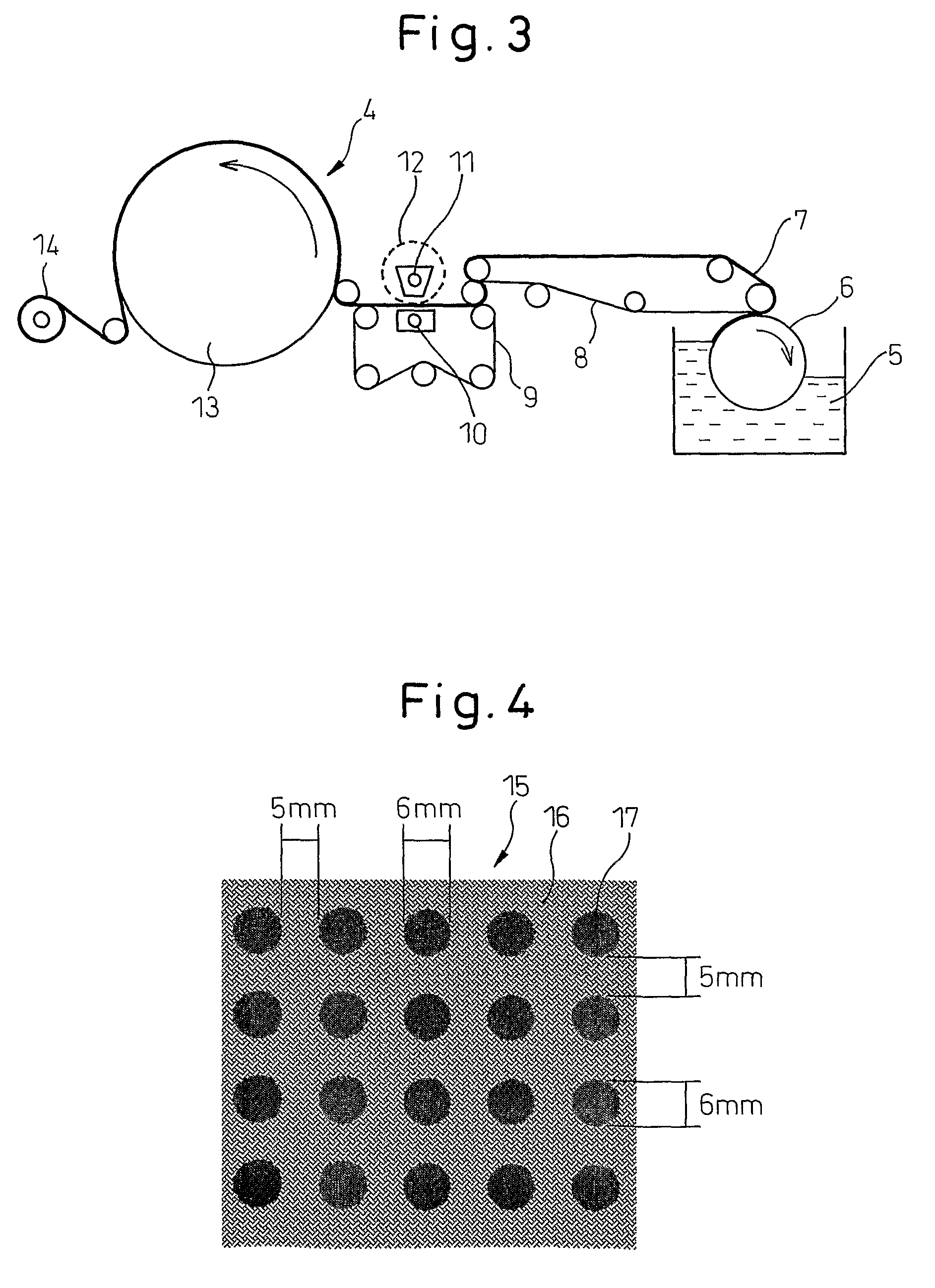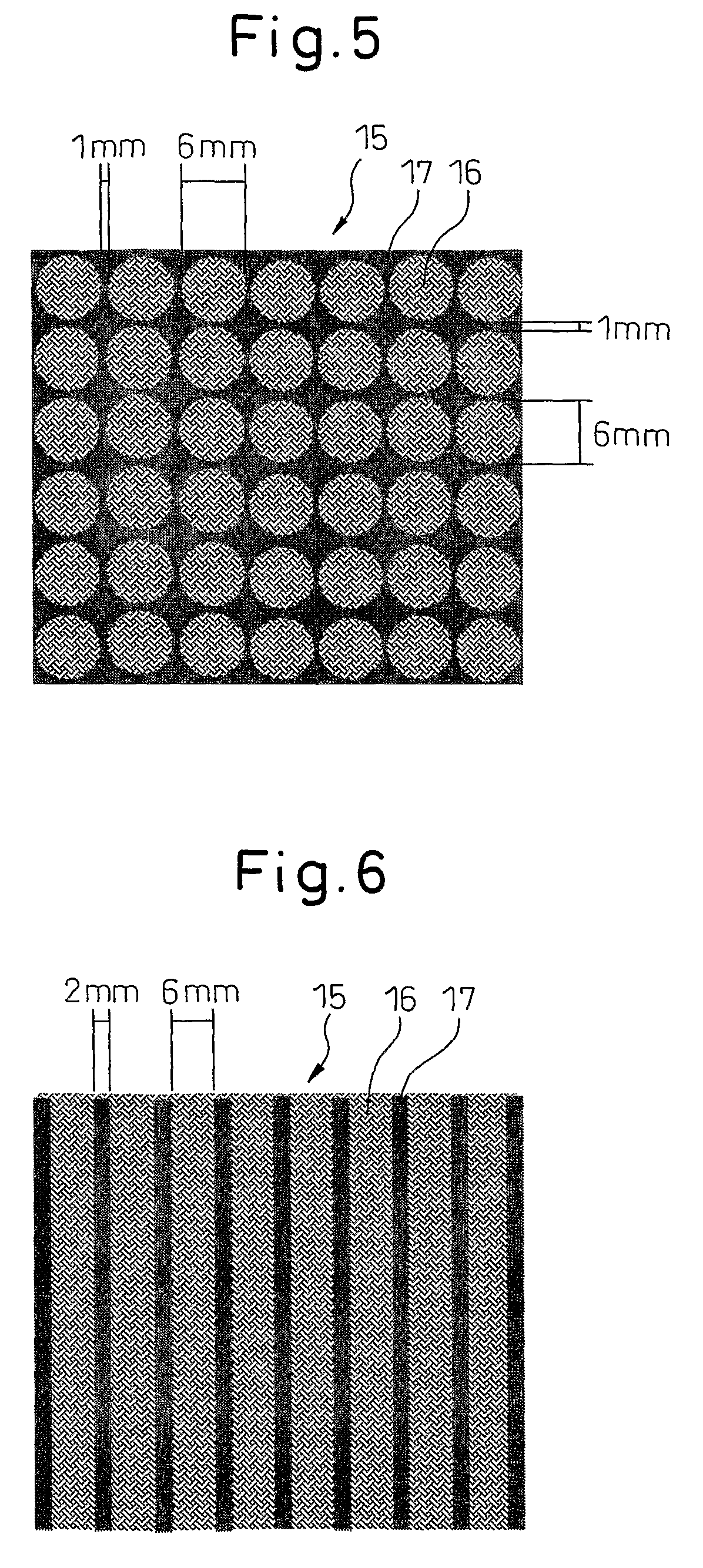Bulky paper with concavo-convex pattern and process for producing thereof
a concave-convex pattern and bulk paper technology, applied in the field of process for producing concave-convex patterns, can solve the problem of inability to freely create designs of concave-convex sections, and achieve the effects of poor liquid diffusibility, large apparent thickness, and high basis weigh
- Summary
- Abstract
- Description
- Claims
- Application Information
AI Technical Summary
Benefits of technology
Problems solved by technology
Method used
Image
Examples
example 1
[0034]To a pulp slurry obtained by dispersing 85 parts by mass of conifer bleached Kraft pulp in water there were added 15 parts by mass of Matsumoto Microsphere F-36 (product of Matsumoto Yushi-Seiyaku Co., Ltd., particle size: 5-15 μm, initial expansion temperature: 75-85° C.) as heat-expanding particles, 0.2 part by mass of FILEX RC-104 (product of Meisei Chemical Works, Ltd., cation-modified acrylic copolymer) as a heat-expanding particle anchoring agent and 0.2 part by mass of FILEX M (product of Meisei Chemical Works, Ltd., acrylic copolymer) while stirring, to obtain a paper-making material with a pulp concentration of 1.0% by mass. The obtained paper-making material was used to make paper with a basis weight of 50 g / m2 using a rectilinear handsheet machine (80 mesh) according to a common method, and the paper was dewatered by sandwiching between filter sheets to obtain a wet mixed sheet with a moisture content of 60% by mass. The paper-making wire of the handsheet machine wa...
example 2
[0035]A bulky paper was obtained by the same procedure as Example 1, except that the paper-making wire shown in FIG. 6 was used. A cross-sectional view of the obtained bulky paper is shown in FIG. 8. It had a concavo-convex pattern with depressed low-basis-weight regions with widths of about 2 mm arranged in a linear fashion within the high-basis-weight regions at a pitch of about 8 mm. The high-basis-weight regions had a basis weight of about 57 g / m2, a thickness of about 2.2 mm and a density of about 0.026 g / cm3, while the low-basis-weight regions had a basis weight of about 30 g / m2, a thickness of about 1.55 mm and a density of about 0.019 g / cm3.
PUM
| Property | Measurement | Unit |
|---|---|---|
| mean particle size | aaaaa | aaaaa |
| density | aaaaa | aaaaa |
| density | aaaaa | aaaaa |
Abstract
Description
Claims
Application Information
 Login to View More
Login to View More - R&D
- Intellectual Property
- Life Sciences
- Materials
- Tech Scout
- Unparalleled Data Quality
- Higher Quality Content
- 60% Fewer Hallucinations
Browse by: Latest US Patents, China's latest patents, Technical Efficacy Thesaurus, Application Domain, Technology Topic, Popular Technical Reports.
© 2025 PatSnap. All rights reserved.Legal|Privacy policy|Modern Slavery Act Transparency Statement|Sitemap|About US| Contact US: help@patsnap.com



